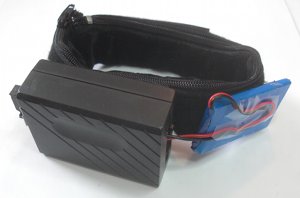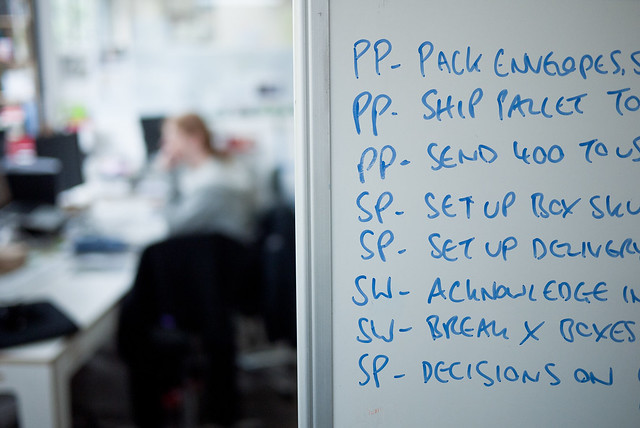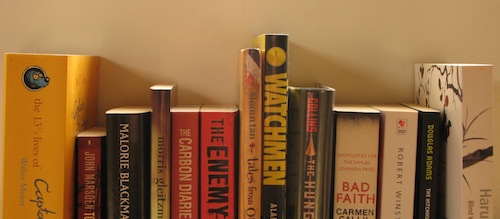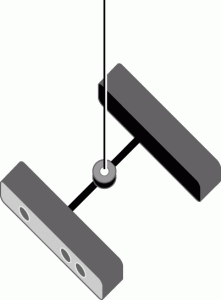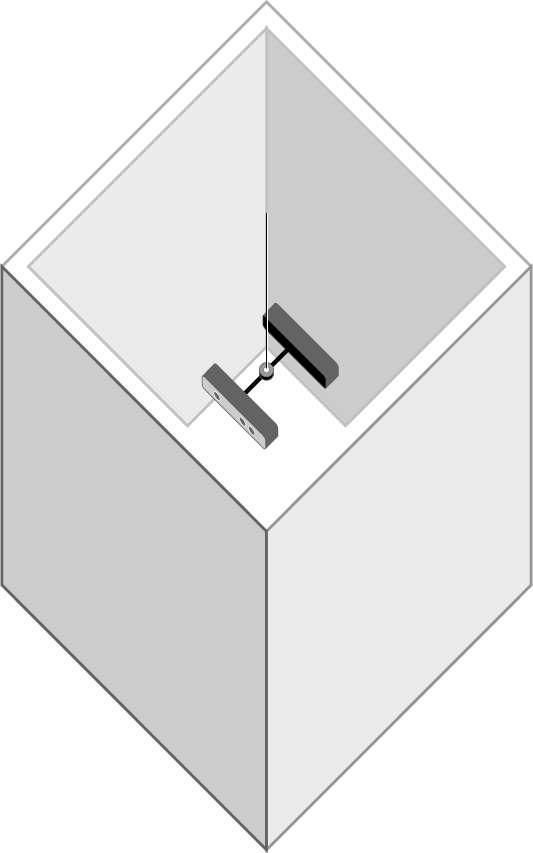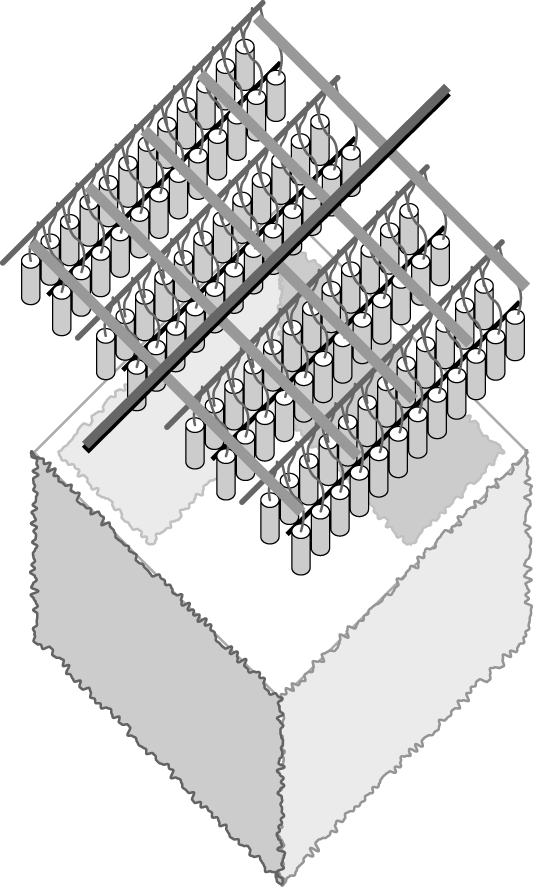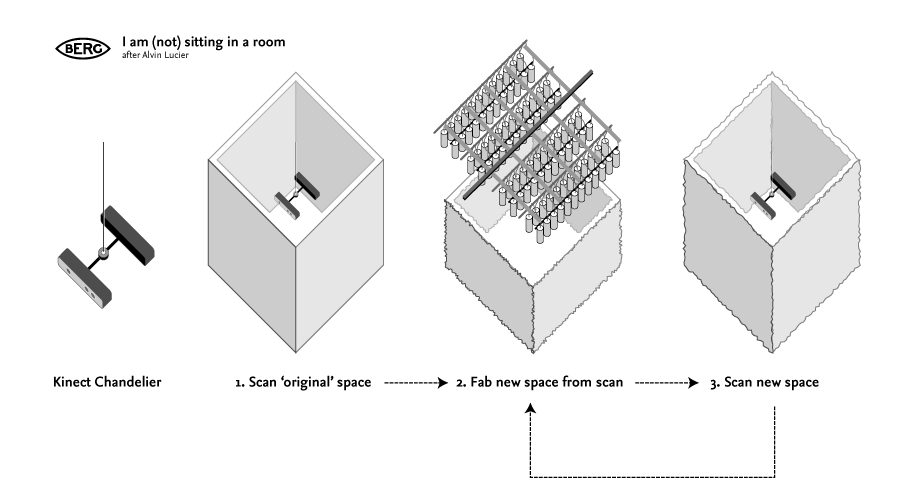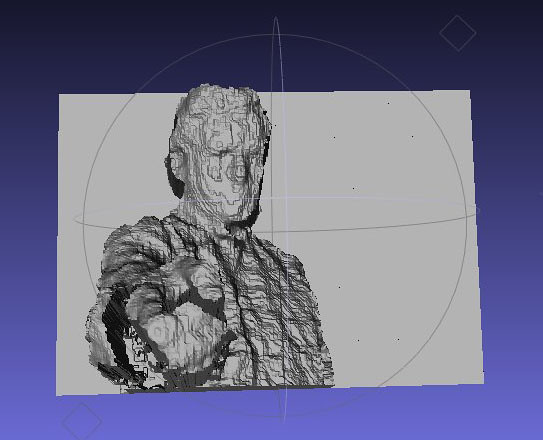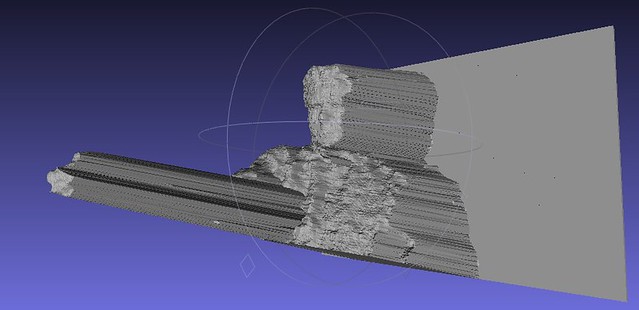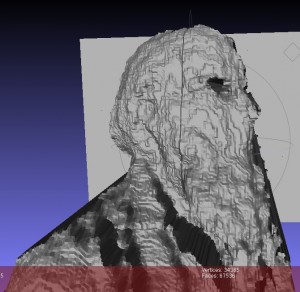As I write this it’s actually Saturday, before the beginning of week 315, and I’m in the studio doing a few odds and ends, browsing the web, and listening to music.
Odds and ends include: configuring Zendesk to use as our customer support help desk once SVK goes on sale, and thinking. I’m not really working hard, just idling.
I don’t get enough time to think. There’s always something else to do. I get good thinking done when I go out for dinner on my own, as I did last week. Before my food arrived, I wrote in my sketchbook some problems with how we currently structure long-term client engagements, then I wrote some opportunities, and then I made some notes about a better engagement structure and what we need to do to bring that about. More of that later.
Dinner was at Viet Hoa where I had chicken in tamarind and egg-fried rice, and fizzy water.
I’m listening to the Amelie soundtrack and before that to Nero’s Dubstep Symphony, which was on the studio speakers a whole bunch in week 314. Good BWAAA BWAAA sounds, played by the BBC Philharmonic Orchestra. There’s no-one else in, and outside it’s alternating between heavy showers with thunder, and bright sun.
#
Idling: They say dreaming is the brain’s way of processing the day’s events and emotions. A necessary process of defragmenting, filing, and letting things come to rest and join up. Idling is a waking dream, time to be with work but not to be working, to let events and activity settle out and resolve, and let ideas and strategy take form in an unforced way. A necessary process.
#
A few hours later – still Saturday – I’m reading an article called A Brief History of the Corporation: 1600-2100 section by section, and interspersing this with reading the monthly Profit and Loss and Balance Sheets of the company from the past year.
While the P&L (actual and projected) is my main tool to make financial decisions day-to-day, the Balance Sheet – the ledger of the company’s assets and liabilities – determines how well I sleep at night.
I use the at-hand assets of the company in a number of ways:
- as a “safety net” in the event that we can’t make payroll for a number of months. This is because the new work pipeline is 3 months long. If we screw up at the beginning of the pipeline (regarding positioning and new prospects), that mistake might only be visible 2-3 months later. (Aside: we visit the pipeline once a week, in a meeting led by Matt Jones, who is head of sales. The pipeline runs from prospects through meetings, proposals, contract, and finally through to Work in Progress. Like a gut, all stages should be equally full, and work prospects should move continuously and smoothly.)
- as tax savings, for annual corporation tax and quarterly VAT.
- to spend and then earn again afterwards, for example in the printing and sales of SVK. This is an investment, which has associated risk: the money might not be earned back, but there is also a possibility it will multiply. This can be directed at a number of projects simultaneously.
- as savings against future, unknown large expenditure.
- as a buffer to invest in growth. For example, taking on a new space or growing the staff are both expenses, but they should result in being able to accept more work or higher paid work. There is a time lag before the money is made back.
- as security on future new product development, to provide backbone during that time. It would put us in a weak position, for example, to only be able to afford to print the comic if we took external investment. That would result in a bad deal. Cash in the bank to afford NPD means you have a strong BATNA, and that means you can be choosier over your path. (I was able to put a name to this instinct after reading Getting to Yes, which I recommend highly.)
- to smooth the natural oscillations that emerge from variable payment terms, expenses, etc.
Each of these has an associated risk profile. For example, I might want to call on the safety net once every 24 months. Printing SVK has a risk profile that reduces the overall capacity by £x,000 for 30 days, and I’m also exposed to a certain probability that the risk capacity is reduced permanently.
The P&L represents flows that continuously replenish and discharge the risk capacity. High flow is both good and bad: a high turnover means there’s always room to do a bit of belt tightening or delay paying expenses, so that’s helpful. But a high turnover also exposes us to great potential oscillations.
You have to have turnover though. If you’re not moving, it’s hard to start. Turnover has inertia.
My sleepness nights are caused when I feel that risk is over-extended, for whatever reason: flow drops (or flow projection drops), available capacity decreases, capacity demand increases, more uses become apparent, several low-probability risk events look like they may coincide. All of these mean me having to make an intervention, which itself has to occur over time and is therefore concerted, so has a possibility of failure – and this is where I get nervous. The level of exposure at which I am prepared to hold risk, at what capacity, is my tolerance.
I attempt to run the company perpetually at medium-risk, with occasional forays into high-risk to grow – trusting ourselves to surf this tightrope – don’t laugh at the mixed metaphor, that’s what it feels like – and sometimes it takes a while to get my sea legs at a new scale, to discover what a tolerance of “medium” feels like when the numbers themselves change. Your sensitivity and tolerance improve only with practice. I wish I’d been given toy businesses to play with at school, just as playing with crayons taught my body how to let me draw.
I’ve written in these weeknotes before how I manage three budgets: cash, attention, risk. This is my attempt to explain how I feel about risk, and to trace the pathways between risk and cash. Attention, and how it connects, can wait until another day.
#
Reading about the history of the corporation reminds me about my public discussion with Mark Leckey at the Serpentine, before I went on holiday. During the Q&A, I mentioned my belief that products and companies are both regarded better as entities transcendent from humans, with their own goals and motivations, rather than being reducible to human use or human intentions.
This caused some consternation in the audience.
But I think it’s true. The company’s decisions aren’t actually the shareholders’ decisions. A company has a culture which is not the simple sum of the opinions of the people in it. A CEO can never be said to perform an action in the way that a human body can be said to perform an action, like picking an apple. A company is a weird, complex thing, and rather than attempt (uselessly) to reduce it to people within it, it makes more sense – to me – to approach it as an alien being and attempt to understand its biology and momentums only with reference to itself. Having done that, we can then use metaphors to attempt to explain its behaviour: we can say that it follows profit, or it takes an innovative step, or that it is middle-aged, or that it treats the environment badly, or that it takes risks. None of these statements is literally true, but they can be useful to have in mind when attempting to negotiate with these bizarre, massive creatures.
(Also, in contradiction, companies are made out of people, at least partially, and we are responsible for their actions. It’s not simple.)
#
It’s raining again outside, and it’s time for me to walk home to get ready for a night out.
#
I said I wouldn’t speak about attention, but here’s a sneak peak of what I would say. Attention is the time of people in the studio, and how effectively it is applied. It is affected by the arts of project and studio management; it can be tracked by time-sheets and capacity plans; it can be leveraged with infrastructure, internal tools, and carefully grown tacit knowledge; and it magically grows when there’s time to play, when there is flow in the work, and when a team aligns into a “sophisticated work group.”
Attention is connected to cash through work.
Attention is connected to risk via feelings. A confident Room is a risk-taking, resilient company. A company over-extended in risk will sap attention. Between attention and risk, where the rubber hits the road, are confidence, the group mentality, ability to read the present and the future, desire and ambition, happiness.
#
Now I really have to go.
#
It’s Monday afternoon, and we’ve just had a visit from a dozen of so students from the design faculty of the University of Delaware. We talked to them about how the studio works, product invention workshops, material exploration (which I once wrote up as “thinking through making”), Tuesday All Hands and Friday Demos, and so on. We didn’t chat about balance sheets, or risk, or attention or cash.
In fact, I don’t know whether it’s necessary to think about these things to have a company. I doubt it is.
But I do enjoy it.
#
Don’t think just because I’m banging on about the company that I don’t care about the work. I do, you should see it! There are projects that make me feel like I’m witnessing new stars being born. The studio is a nebula. But I can’t talk about them yet.
#
Also I enjoy interrogating my own decision making, and giving names to my instincts.
#
A little sketch of the studio: it’s mid afternoon. Everyone is occupied with work and there’s no chatter. Unusually there is gentle blues on the speakers, a female vocalist. It’s busy enough that every couple of minutes somebody walks in or out of the door. Click clack. I can see Nick’s screen, which is showing a lot of code, and Matt J’s, who is typing emails. Joe’s screen I can’t see, but he is moving between drawing on paper, and looking at his screen, holding the mouse in one hand and his chin in another. He’s sort of twisting his head at his monitor, like a labrador trying to figure out one of those Magic Eye pictures. It’s raining outside and the room feels only just slightly too dim for June.
#
On SVK:
Let me get off my chest what everyone in the studio is feeling about SVK right now. It is frustrating. Warren and Matt Brooker finished the comic weeks ago. And then it’s just been one thing after another. Getting the layouts correct. Proof-reading. Waiting for time at the printers. Printing (actually that was very handsome). Assembly. Delivery to the warehouse, followed by inventory of the delivery, followed by breaking up the pallets into individual items and a second inventory (this all takes a lot of time). Delivery tests, and final tests of the payment, fulfilment, and invoicing systems. That’s the critical path — other tasks slot in alongside and don’t add to the elapsed time: preparation of launch publicity materials, the customer support system, bookkeeping integration, etc. So much time, and damn, we just want to get it in your hands.
On the upside, the story is awesome, and the art is brilliant. The comic as an artefact is better than I had hoped. It’s actually an excellent yarn, well told and clever and tight and funny. There was a risk that the twist would be gimmicky, but nope. Warren is astounding.
Also, SVK is a little crystal business.
We’ve integrated systems to do warehousing, fulfilment, accounts, and customer support, with the minimum of overhead. One of the big difficulties of working with physical things is supply chain management, the work of channeling flows of raw materials into products, and directing them into the hands of customers. It’s easier when you have infrastructure, so that’s what we’ve set up.
I feel like I’ve got a new hammer, and now I’m looking around for things to warehouse and sell.
So if we can do our own sales and distribution, that actually opens up a lovely area of business. I spoke about this in an interview on GigaOM: “If you own your own distribution, you can afford to spend more on making a quality product instead, made for a smaller number of more discerning people. You avoid the trap of needing a hit that sells millions and millions of something — but spending most of that on marketing and distribution, and having a bunch of failures — which is the trap I believe a lot of big mass manufacture companies are in. ‘Product’ will be reinvented, just as music and media were reinvented by iTunes and blogs: there is a world appearing in between the big guys and the little hobbyists. The middle is getting filled in.”
The happy middle! It means we get to work with Warren Ellis and Matt Brooker, that’s what it means.
I like having the knowledge in the Room of how all this stuff works. It means we’re putting where our money where our mouth is, to an extent, and can speak with a little more knowledge with clients.
But really I like it because I enjoy putting together a machine for channeling flows with minimum intervention, a toy business, a machine that hooks together with well-oiled joints, and runs with smooth and happy regularity.
Turns out I’m becoming a supply chain management fan.
To this point, the folks next door, Newspaper Club, are an inspiration. They have a website for people to design newspapers, they print newspapers with partners, they ship newspapers, they have customer support, all joined up. A well put together, well-oiled machine.
What else can you do with that?
Deleuze and Guattari called this an abstract machine, which I like because it implies that the machine is virtual – an arrangement rather than a single constructed edifice – and also that it can be copied, reused. It is independent, a bit, from that which is being produced. So when I see a particular abstract machine I wonder: what else you can do with that?
#
That reminds me: a funny thing happened when Simon started as project manager. As he got up to speed, projects went much smoother, Jack and Matt J spent more time on the sales pipeline, and suddenly all the work proposals piled on top of each other like an oppressive stack. It turns out that – because they were connected by being rivals for the same people’s time – project management and sales were geared together. The machine was at equilibrium before, but we were depending on part of it sticking. Simon fixed that, and now we have a different problem: sales is running too fast. This is also, as it happens, an opportunity: we can attempt to combine these proposals into fewer, larger engagements, now we have the attention to try it.
Our pattern used to be to do workshops, and then engage in larger projects. Maybe now we’re larger, we can do projects, and then those turn into retainer relationships. Retainers would last for a year or more, and include month by month research, out of which projects would bubble. That’s what I was sketching at dinner the other night, and I wrote it up as an email and then a presentation today.
Also recently I’ve been making spreadsheets to track capacity, and Simon has been working on spreadsheets to report on project budget usage. Infrastructure! Tools!
Simon is planning to write up these systems as a kind of operations manual, a Choose Your Own Adventure for how to deal with projects. (Kari’s already done this for financial and general admin.) What else can you do with that?
We used to have ways to do these things, approximations at least, but we had 7 people on the payroll in January, and we have 13 this month (lost 2, gained 8). In a growing company all your processes are broken.
Plus we’re all learning as we go.
The room, the physical room, is full, and sometimes it feels like a pressure cooker. I can’t look into space and think without my gaze landing on a person’s face. Bubble bubble. I can’t joke about it, it’s not fun. When everyone gets drunk on Friday night and goes to the pub, they have a quiet word and complain about it to me. It’s on my radar folks.
#
I guess another reason I spend a lot of time thinking about the company is because I’m pre-occupied with failure. I’m confident that the work will be beautiful, inventive and mainstream. And I’m confident that we’re aware of how important it is that the Room is a happy one. The company as a corporate entity feels like my responsibility. My job is to let the studio do what the studio wants to do, and to not crash it or stall it.
Two ways we fail:
The first is ignorance–we may err because science has given us only a partial understanding of the world and how it works. There are skyscrapers we do not yet know how to build, snowstorms we cannot predict, heart attacks we still haven’t learned how to stop. The second type of failure the philosophers call ineptitude–because in these cases the knowledge exists, yet we fail to apply it correctly. This is the skyscraper that is built wrong and collapses, the snowstorm whose signs the meteorologist just plain missed, the stab wound from a weapon the doctors forgot to ask about.
(The Checklist Manifesto, Atul Guwande, summarising Towards a Theory of Medical Fallibility, Gorovitz and MacIntyre, 1975.)
I don’t buy it, at least not in the field of invention.
Ignorance is a marker of somewhere interesting to dig. “Thinking through making” is really a dialogue between the designer and the material, one which reveals the unknown unknowns. Once you’ve become aware of your ignorance, you can do something with it, trade it in for interesting things. Also naivety gives you strength.
Ineptitude is a worry. You have to pay due diligence to your own ineptitude. But again, if you’re not getting shit wrong a good proportion of the time, you’re not learning hard enough.
Here’s another description of failure, from Ernest Hemingway in Across the River and Into the Trees.
So, the Colonel thought, here we come into the last round and I do not
know even the number of the round. I have loved but three women and have lost them thrice.
You lose them the same way you lose a battalion; by errors of judgment; orders that are impossible to fulfill, and through impossible conditions. Also through brutality.
So I look out for these, these are what I look out for.
#
Two more moments from Monday, week 315:
First thing this morning, Joe bought Kinder Surprise chocolate eggs for everyone in the studio. They have prizes inside. Matt Jones got an aeroplane. Alex got a small car with a website written on the bottom, and if you go to that website, you can play a game of driving around a racetrack where you hold your hands as if you’re holding a steering wheel, and the game figures out what to do by looking at you with the webcam. Computer vision. I got a coquettish hedgehog.
Right now, in the evening, we’re moving places so that people who need the big desks have the big desks, and people who don’t so much have either have the two-thirds-length shared desks, or share a desk (I now share a desk with Kari). I’m writing this as everyone is moving objects around and wiping tables. It seems to involve a lot of collisions, and a little bit of dancing, and painfully hard high 5s. We’ve moved our massive plant pots outside, and replaced them with smaller ones that perch on shelves or on the corners of things.
#
Time passes.
#
Now we’ve just had Tuesday All Hands, it’s traditional that I give a run-down of what people are doing this week. But 13 people were speaking, so maybe I should do something more impressionistic.
More people are working on the Chaco projects this week, as the work kicked off with various external contractors comes to fruition and it’s time for the various streams to converge. It seems like, with these projects, we’re going through a tipping point from exploration to minimum viable product (MVP) and its associated communications. You go for the MVP because you need to get to an end-to-end experience as soon as possible. You can’t tell how well something will work until it’s sitting there in your sweaty palm.
That tip-over is an important part of our process, and it’s tough. It often feels like a crisis moment, when you are forced to shear off branches of the infinite exciting possibilities and come down to one.
Another important part of our process is to think about the MVP and its communications simultaneously. I’m inspired by Apple in this respect: I’ve heard that they have strong Product Marketing roles. That’s clever, to have final responsibility for the product features and for the way the product is understood in a single person, in a single brain.
People involved: JS (who is on holiday in New York, but has been having meetings), MJ, DW, JM, NL, TA, AH, SP, me (a little). External contractors involved include software engineers, model makers, and product designers.
Dimensions 2, the follow-up to How Big Really with the BBC, is going through what TS calls “productionising.” It’s working, fully, in WebKit browsers, but it needs to work with a broader set, and it’ll also need to go through tuning, and then the project launch process.
People involved: TS, DW, SP, AJ.
AB is finding her feet (only her second week!) and learning new computer languages through the project called Flagstaff. Other people involved: JM, AJ. It’s a good training project, and should have some public results.
Then there’s SVK (people: MJ, AJ, DW, NL, KS. I’m running a help desk training session shortly), and our other new product development (DW, NL, JD, AH, JS, PW, plus a number of external companies). The NPD all happens in the back room, the one we call New Statham.
#
There’s a lot going on. It’s a good Room, even if it is rather full to the brim.
What else can you do with that?
#
It feels like the studio has plumped out nicely the last few months. We’ve got the right group of people to do the work and projects we were attempting to do, we’ve grown into ourselves. Maybe we’ve reached a plateau of sorts, a place to concentrate on the work and on making this particular abstract machine work well — time to nurture the interconnections, feed the rhizome.
And so we’re ready to do what’s becoming the goal and approach for BERG: build an awesome Room, then – by design and hard work – ignite some beautiful, inventive singularity right in the middle of it, one that changes how people think and produces massive and unpredictable new opportunities. My aspiration: to be the best at knowing how to improvise through these provoked singularities and, in the hot heart of them, to forge new culture.


